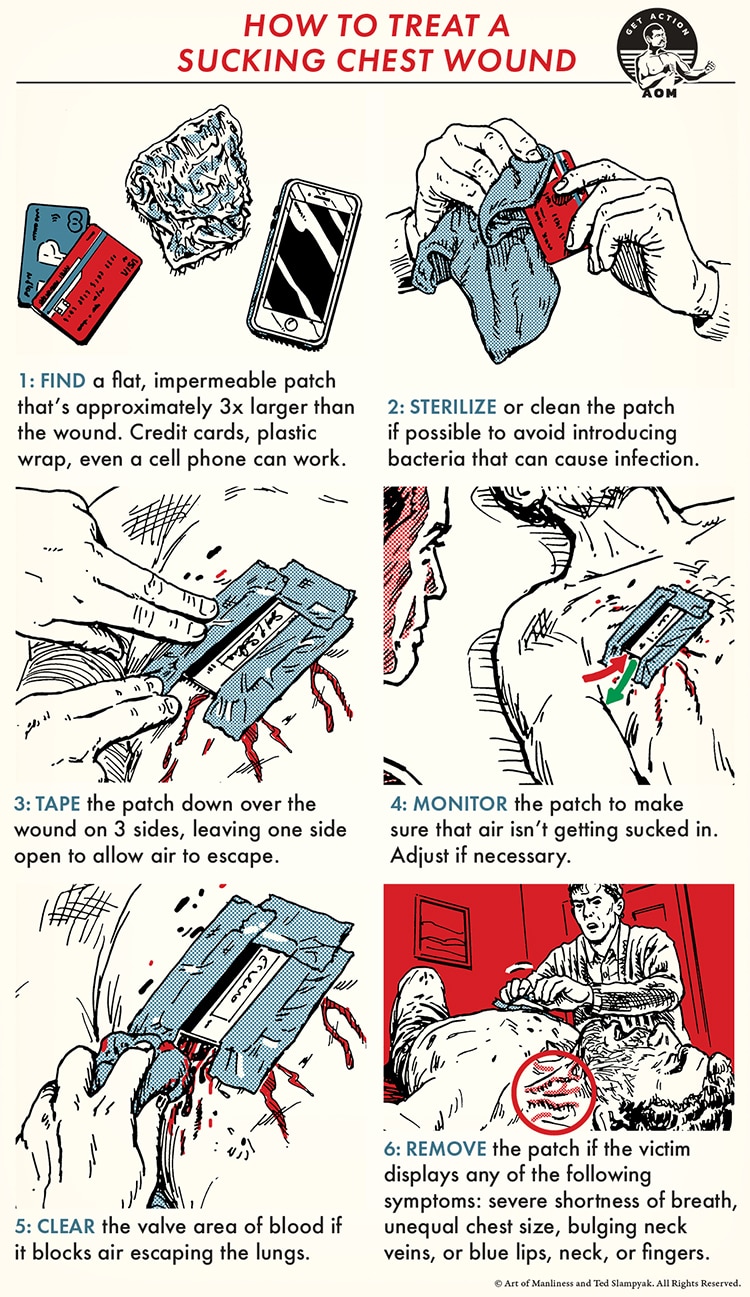
An important part of manhood has always been about having the competence to be effective in the world — having the breadth of skills, the savoir-faire, to handle any situation you find yourself in. With that in mind, each Sunday we’ll be republishing one of the illustrated guides from our archives, so you can hone your manly know-how week by week.
A sucking chest wound occurs when the chest cavity is punctured by some foreign object. Bullets and bits of shrapnel are common culprits.
Your lungs consist of delicate sacs that fill with air when you inhale. Your chest cavity, including your ribs, protects your lungs and maintains an open space for them to expand into. When something pierces your chest cavity, outside air can flood in and cause your lung to collapse. A collapsed lung will leave you gasping, or sucking, for air as your lung tries to fight against the increased pressure coming in through the wound. That pressure only builds as you try to breathe harder.
Sucking chest wounds typically cause blood to foam or bubble near the wound site. Treating such a wound quickly is critical, so you should assume any severe wound to the chest is a sucking chest wound. Apply treatment immediately and get the injured person to medical attention as soon as possible. The key to treatment is to seal off the chest cavity to prevent outside air from putting pressure on the lungs while still allowing air to escape as the lungs inflate. To accomplish this, you want to create a valve that allows air to exit, but not enter, the chest cavity.


